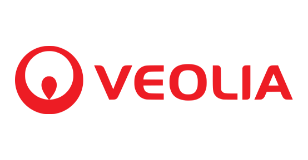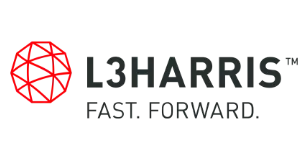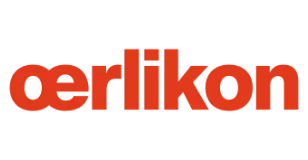
Latin America Air Quality Monitoring Market Research Report: Forecast (2022-27)
By Products & Services (Indoor (Fixed, Portable), Outdoor (Fixed, Portable), AQM (Ambient, Indoor), Fixed Source (Commissioning & Optimization, Testing & Repairs, Internal Cleaning... & Maintenance, Retrofitting or Replacement Services)), By Sampling Method (Active/Continuous, Passive, Intermittent), By Pollutant (Physical, Chemical, Biological), By End User (Commercial & Residential, Petrochemical Market, Government Agencies & Industries, Power Generation Plants, Pharmaceutical Market), By Country (Brazil, Mexico, Argentina, Peru, Chile), By Competitors (Thermo Fisher Scientific, Teledyne Technologies, Horiba, Cerex Monitoring Solutions, Aeroqual, Ecotech ACOEM Group, General Electric, 3M, Honeywell) Read more
- Environment
- Jan 2022
- Pages 173
- Report Format: PDF, Excel, PPT
Market Definition
Air quality monitoring systems are used primarily for measuring the level of pollutants, dust, & contaminants present in the air. There are different types of these monitors available, like indoor & outdoor, based on the setting. These devices have applications in various verticals like government agencies, education institutions, the pharmaceutical sector, commercial & residential sectors, etc.
Market Insights
The Latin America Air Quality Monitoring Market is projected to grow at a CAGR of around 6% during the forecast period, i.e., 2022-27. The market is driven primarily by the advent of advanced technologies like the Internet of Things (IoT) & Cloud Computing, along with components like detection sensors & microcontrollers. These advances & components enable Air Quality Monitoring Devices to detect Carbon Monoxide, Carbon Dioxide, Aerosol Concentration, Humidity, etc., present in the air. It, in turn, is soaring the demand for these systems to keep a check on pollution levels and seek ways to enhance the air quality.
In addition, several industries deploying air quality monitors, coupled with governments of different countries across Latin America actively laying out stringent regulations & standards to reduce pollution levels & enhance the air quality in indoor & outdoor settings, are also significantly contributing to the overall market growth. In fact, they are spreading awareness among people through programs & campaigns and encouraging them to install air quality monitoring devices. Moreover, with the Covid-19 pandemic in 2020, the market observed a temporary hike since people got compelled to stay at their homes, which instigated the demand for air quality monitoring devices & purifiers.
| Report Coverage | Details |
|---|---|
| Study Period | Historical Data: 2017-20 |
| Base Year: 2021 | |
| Forecast Period: 2022-27 | |
| CAGR (2022-2027) | 6% |
| Countries Covered | Brazil, Mexico, Argentina, Peru, Chile, Others |
| Key Companies Profiled | Thermo Fisher Scientific, Teledyne Technologies, Horiba, Cerex Monitoring Solutions, Aeroqual, Ecotech ACOEM Group, General Electric, 3M, Honeywell |
| Unit Denominations | USD Million/Billion |
Impact of Covid-19 on the Latin America Air Quality Monitoring Market
The emergence of the Covid-19 pandemic had a decelerating effect on most industries across Latin America, which did fluctuate the dynamics of the Air Quality Monitoring Market. While the governments of different countries in the region imposed stringent movement restrictions & lockdowns to curb the spread of this dreadful disease, most manufacturing units got shut & the entire supply chain got severely hampered.
The industry also witnessed challenges like shortage of labor & raw materials, delays in delivering pre-produced products, cancellation of projects, and no new production, among various others, which, in turn, resulted in massive financial losses to the leading players in the industry.
However, the gradual improvement in the pandemic situation with a gradually reducing number of cases made governments across Latin America uplift restrictions & allow the recommencement of business operations, which enabled the market to regain its usual growth pace & recover from losses slowly. Nonetheless, the market is also displaying remunerative growth opportunities for the leading players and instigating them to introduce innovations in products to drive the market during 2022-27.
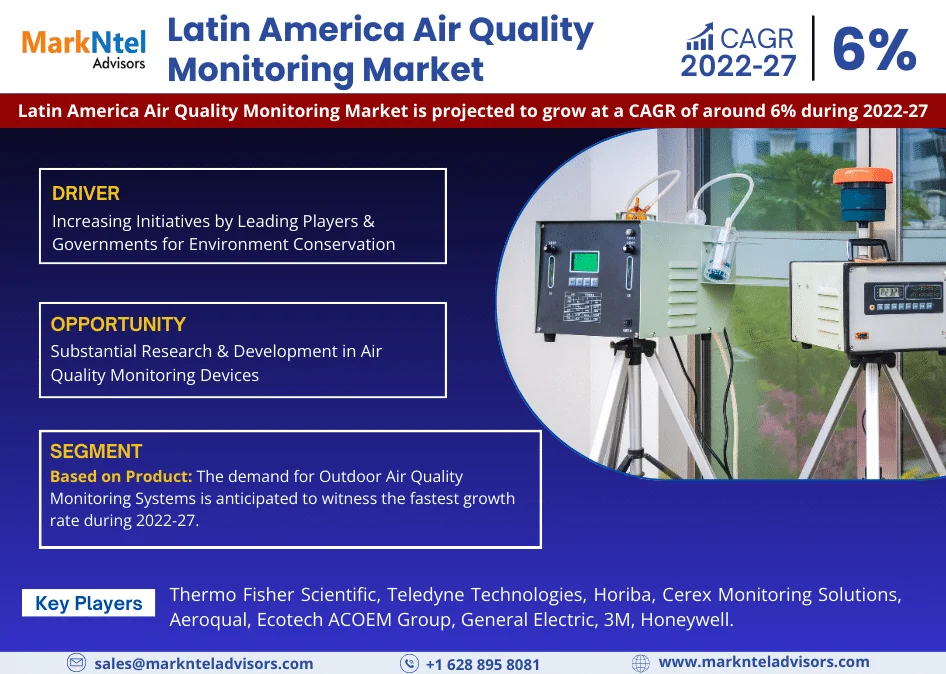
Market Segmentation
Based on the Product:
- Indoor
- Outdoor
Of them all, the demand for Outdoor Air Quality Monitoring Systems is anticipated to witness the fastest growth rate during 2022-27. It owes principally to their operational advantages like miniaturized & compact size, easy portability, etc., coupled with substantial investments by the governments of different countries in Latin America, and the active participation of leading players for the deployment of the outdoor systems to monitor pollution levels & take necessary measures to enhance the overall air quality.
Besides, the demand for outdoor air quality monitoring devices is also likely to surge with an increasing consumer base across petrochemical, government agencies & academic institutes, commercial & residential users, power generation plants, & pharmaceutical industries. Moreover, the advent of green building technologies & smart home trends is another crucial aspect projected to fuel the overall market growth during the forecast period.
On the other hand, Indoor Air Quality Monitoring Systems are anticipated to dominate the market with the largest share during 2022-27. It owes prominently to their capabilities to determine the air contamination & purity levels by sensing the level of dust, pollutants, & suspended particles present in the environment. These systems are based majorly on sensors & used extensively in different environmental scenarios. Most people spend a majority portion of their time indoors. Hence, at times, their exposure to indoor air pollutants might be higher than outdoor pollutants. As a result, the demand for these systems is soaring significantly to recycle & cleanse indoor air.
Based on the End-User:
- Petrochemical
- Government Agencies & Academic Institutes
- Commercial & Residential Users
- Power Generation Plants
- Pharmaceutical
Of them all, the Latin America Air Quality Monitoring Market is gaining significant momentum across several government agencies & academic institutions. Since governments are increasingly taking several initiatives to deploy air quality monitoring devices, their utilization at numerous agencies to establish national networks is substantially rising.
Similarly, the installation rate of these devices is also rising significantly across academic institutions to monitor air quality & avoid health compromises on individuals. Furthermore, with stringent government regulations for the adoption of effective air quality monitoring systems, coupled with massive investments, the market shall observe lucrative growth opportunities in the coming years.
Country Landscape
Geographically, the Latin America Air Quality Monitoring Market expands across:
- Brazil
- Argentina
- Mexico
- Chile
- Peru
Of them all, the Air Quality Monitoring Market is anticipated to boom across Peru during 2022-27. It owes principally to the alarming levels of pollution in the country entwined with stringent regulations to curb emissions. In 2020, Peru instated a regulation allowing only the import of vehicles used less than 2 years.
This measure aims to upgrade the entire vehicle fleet & reduce pollution levels from the country. With the help of Air Quality Monitoring devices, the government of Peru is keeping a check on pollution levels & seeking different ways to enhance the air quality. Hence, with this intention, the demand for air quality monitoring systems is likely to rise in the coming years.
The city Lima Callao in Peru has joined a campaign called BreatheLife to improve the air quality as a part of their pledge made as a C40 city to actively deploy quality monitoring systems and make quality information available to everyone around the city.
On the other hand, Mexico is also contributing significantly to the overall market growth with the rapid installation of air quality monitoring devices & massive investments in developing such devices while implementing stringent norms to reduce pollution levels. Besides, the Mexican government is also spreading awareness about these systems through various programs and encouraging people to adopt air quality monitoring systems.
Furthermore, Brazil is projected to observe considerable market growth over the forecast years. It owes principally to the rapid industrialization & urbanization in the country, i.e., generating immense pollution and propelling the demand for air quality monitoring devices. Besides, the southeast region of Brazil is the most polluted area, i.e., across big cities like Rio De Janeiro & São Paulo, along with massive industries.
Moreover, the Brazilian government is seeking different ways to address surging concerns over curbing the intensified environmental health risks & improving air quality. With a target to reduce Green House Gas (GHG) emissions, the demand for large-scale air quality monitoring systems is rising and fueling the overall market growth.
Market Dynamics:
Key Driver: Increasing Initiatives by Leading Players & Governments for Environment Conservation
The swiftly rising awareness among people about the harmful effects of air pollution, coupled with the active participation of leading players & governments of different countries across Latin America to increase the production & deployment of air quality monitoring devices, are likely to drive the Air Quality Monitoring Market during 2022-27.
Possible Restraint: High Production, Installation & Maintenance Costs of Air Quality Monitoring Systems
With the swift emergence of several alternatives to air quality monitoring systems & mounting inclination toward renewable resources to reduce carbon emissions, the market might observe a notable decline during 2022-27. In addition, the high capital investment required in the production, installation & maintenance of air quality monitoring systems may also shift consumers toward alternatives, which, in turn, might hinder the overall market growth in the coming years.
Growth Opportunity: Substantial Research & Development in Air Quality Monitoring Devices
The active participation & initiatives by the governments of different countries in the Latin America through several research & development activities to bring innovations in air quality monitoring technology is likely to generate growth opportunities for the leading players in the market. In addition, the adoption of advanced systems like nanotechnology-based systems, remote sensing, miniaturized systems shall further create areas of opportunities for prominent & emerging players along with numerous research organizations,
Key Questions Answered in the Market Research Report:
- What are the overall statistics or estimates (Overview, Size- By Value, Forecast Numbers, Segmentation, Shares) of the Latin America Air Quality Monitoring Market?
- What are the country-wise industry size, growth drivers, and challenges?
- What are the key innovations, opportunities, current & future trends, and regulations in the Latin America Air Quality Monitoring Market?
- Who are the key competitors, their key strengths & weaknesses, and how do they perform in the Latin America Air Quality Monitoring Market based on the competitive benchmarking matrix?
- What are the key results derived from surveys conducted during the Latin America Air Quality Monitoring Market study?
Frequently Asked Questions
- Introduction
- Product Definition
- Research Process
- Glossary
- Market Segmentation
- Executive Summary
- Latin America Air Quality Monitoring Market Outlook, 2017-2027F
- Market Size & Analysis
- Market Revenues
- Market Share & Analysis
- By Product & Services
- By Products
- Indoor
- Fixed
- Portable
- Outdoor
- Fixed
- Portable
- Indoor
- By Services
- AQM
- Ambient
- Indoor
- Fixed Source
- Commissioning & Optimization
- Testing & Repairs
- Internal Cleaning & Maintenance
- Retrofitting or Replacement Services
- AQM
- By Products
- By Sampling Method
- Active/Continuous
- Passive
- Intermittent
- By Pollutant
- Physical
- Chemical
- Biological
- By End User
- Petrochemical
- Government Agencies and Academic Institutes
- Commercial and Residential Users
- Power Generation Plants
- Pharmaceutical
- Others
- By Country
- Brazil
- Argentina
- Mexico
- Chile
- Peru
- Others
- By Company
- Revenue Shares
- Strategic Factorial Indexing
- Competitors Alignment in MarkNtel Competition Quadrants
- By Product & Services
- Market Size & Analysis
- Mexico Air Quality Monitoring Market Outlook, 2017-2027F
- Market Potential & Outlook
- Market Revenues
- Market Segmentation & Outlook
- By Product & Services
- By Sampling Method
- By Pollutant
- By End User
- Market Potential & Outlook
- Chile Air Quality Monitoring Market Outlook, 2017-2027F
- Market Potential & Outlook
- Market Revenues
- Market Segmentation & Outlook
- By Product & Services
- By Sampling Method
- By Pollutant
- By End User
- Market Potential & Outlook
- Brazil Air Quality Monitoring Market Outlook, 2017-2027F
- Market Potential & Outlook
- Market Revenues
- Market Segmentation & Outlook
- By Product & Services
- By Product
- By Services
- By Sampling Method
- By Pollutant
- By End User
- By Product & Services
- Market Potential & Outlook
- Argentina Air Quality Monitoring Market Outlook, 2017-2027F
- Market Potential & Outlook
- Market Revenues
- Market Segmentation & Outlook
- By Product & Services
- By Sampling Method
- By Pollutant
- By End User
- Market Potential & Outlook
- Peru Air Quality Monitoring Market Outlook, 2017-2027F
- Market Potential & Outlook
- Market Revenues
- Market Segmentation & Outlook
- By Product & Services
- By Sampling Method
- By Pollutant
- By End User
- Market Potential & Outlook
- Latin America Air Quality Monitoring Market Dynamics
- Impact Analysis
- Drivers
- Challenges
- Latin America Air Quality Monitoring Market Recent Trends & Developments
- Latin America Air Quality Monitoring Market Regulatory Framework
- Competition Outlook
- Competition Matrix
- Product Portfolio
- Target Markets
- Target End Users
- Research & Development
- Strategic Alliances
- Company Profiles (Business Description, Product Offering, Strategic Alliances or Partnerships, etc)
- Thermo Fisher Scientific
- Teledyne Technologies
- Horiba
- Cerex Monitoring Solutions
- Aeroqual
- Ecotech ACOEM Group
- General Electric
- 3M
- Honeywell
- Competition Matrix
- Disclaimer
MarkNtel Advisors follows a robust and iterative research methodology designed to ensure maximum accuracy and minimize deviation in market estimates and forecasts. Our approach combines both bottom-up and top-down techniques to effectively segment and quantify various aspects of the market. A consistent feature across all our research reports is data triangulation, which examines the market from three distinct perspectives to validate findings. Key components of our research process include:
1. Scope & Research Design At the outset, MarkNtel Advisors define the research objectives and formulate pertinent questions. This phase involves determining the type of research—qualitative or quantitative—and designing a methodology that outlines data collection methods, target demographics, and analytical tools. They also establish timelines and budgets to ensure the research aligns with client goals.
2. Sample Selection and Data Collection In this stage, the firm identifies the target audience and determines the appropriate sample size to ensure representativeness. They employ various sampling methods, such as random or stratified sampling, based on the research objectives. Data collection is carried out using tools like surveys, interviews, and observations, ensuring the gathered data is reliable and relevant.
3. Data Analysis and Validation Once data is collected, MarkNtel Advisors undertake a rigorous analysis process. This includes cleaning the data to remove inconsistencies, employing statistical software for quantitative analysis, and thematic analysis for qualitative data. Validation steps are taken to ensure the accuracy and reliability of the findings, minimizing biases and errors.
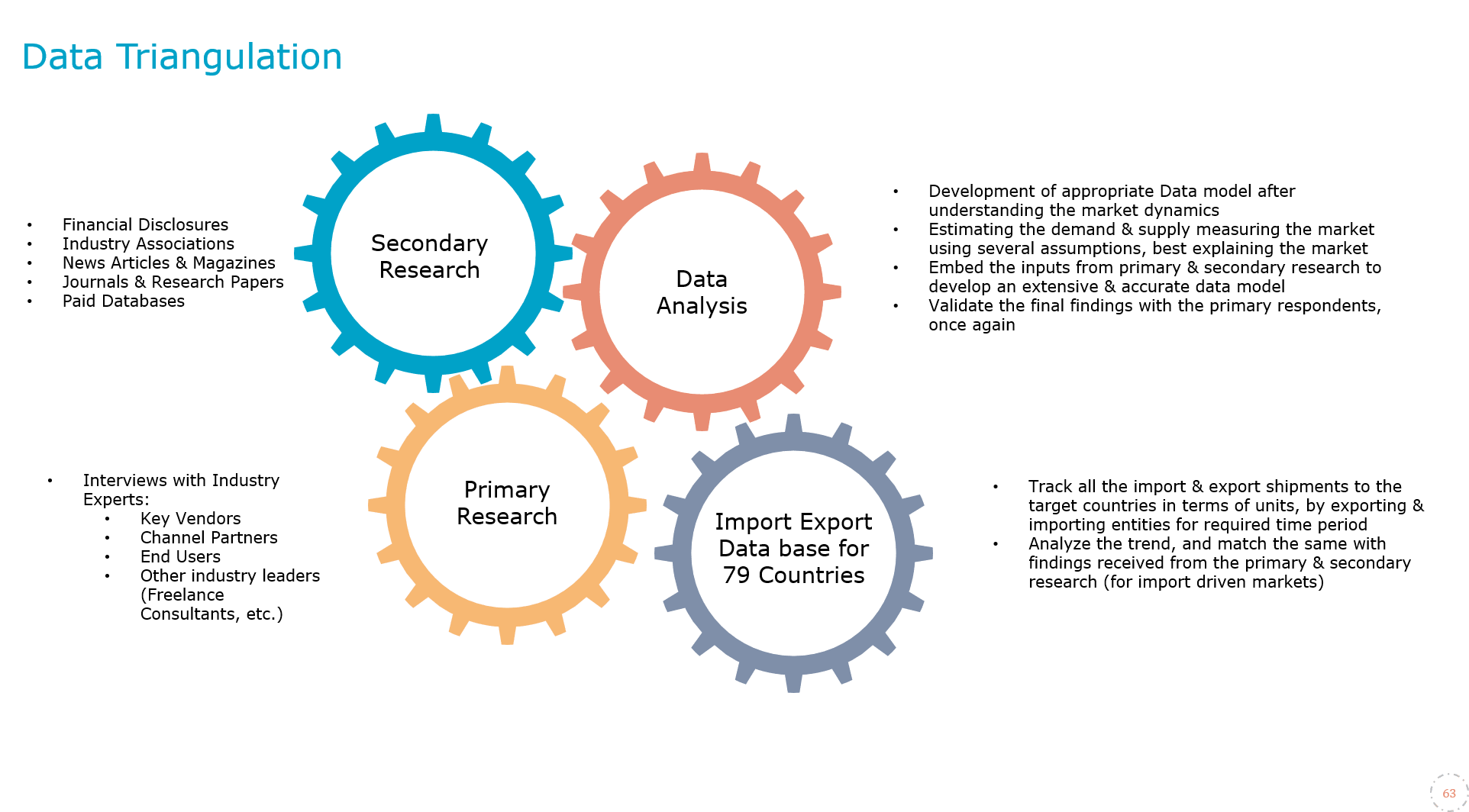
4. Data Forecast and FinalizationThe final phase involves forecasting future market trends based on the analyzed data. MarkNtel Advisors utilize predictive modeling and time series analysis to anticipate market behaviors. The insights are then compiled into comprehensive reports, featuring visual aids like charts and graphs, and include strategic recommendations to inform client decision-making

